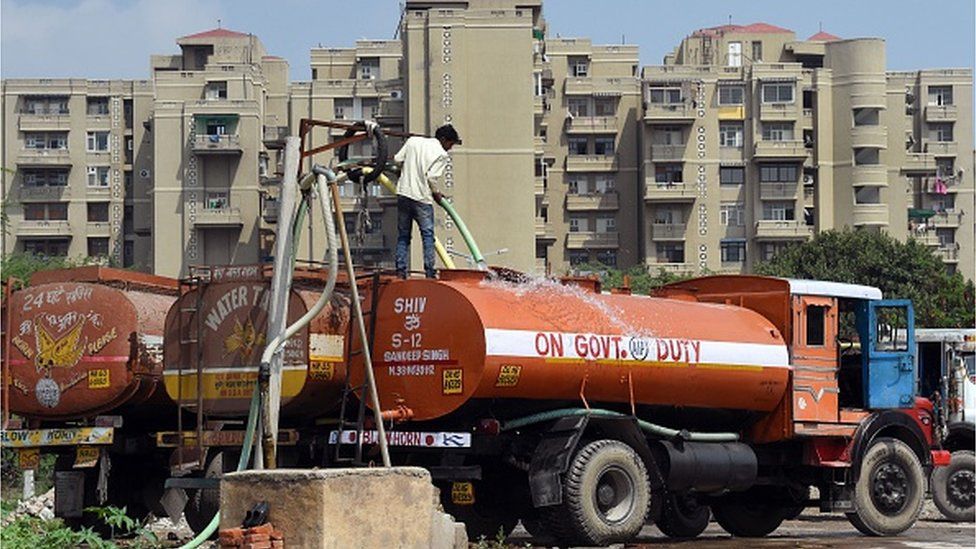Listen the Article:
Joshimath, an Indian town in the Himalayas, has been in the news because it is slowly sinking into the ground because of uncontrolled building and water pumping. Experts fear several cities in the country could meet the same fate. But a neighbourhood in the capital city of Delhi stopped using groundwater and stopped the land from sinking.
)
Sudha Sinha, 54, and her family shifted to Dwarka in 1998 because they wanted greener surroundings and to be closer to Indian capital’s airport.
But they soon found out that the neighbourhood didn’t have piped water. Instead they had to use groundwater pumped up by a borewell for use as drinking water, for bathing and other everyday purposes.
Over the years, as more people moved to Dwarka, residents and builders dug hundreds of borewells, some as deep as 60m (196ft) to meet the growing demand for water.
The stress of living in a Himalayan town in India that is sinking
“Apartments, markets, and schools grew like weeds, and everyone used groundwater,” says Ms. Sinha.
The land sinks when groundwater is pumped out, which is called land subsidence. Several studies showed that the same was happening in Dwarka.
A government report said that Dwarka’s land was sinking because groundwater was being used up. A University of Cambridge report corroborated that the neighbourhood had subsided by around 3.5cm (1.4in) in 2014 alone.
Residents and the government took strong steps to stop taking water from the ground and using it.
The government started giving the people piped water so that borewells could be shut down. Buildings that were still using borewells were given heavy fines, and people started collecting rainwater to raise the water table in the area.
Shagun Garg, a researcher who used satellites to look at groundwater levels in Delhi, said that while some parts of the city and its suburbs were sinking, Dwarka “quite remarkably” showed upliftment, which is when parts of the Earth’s surface rise.
#Afghanistan How a Delhi district stopped the ground from sinking https://t.co/pN45QKE2VJ #Afghanistan
— AfghanistanTest (@AfghanistanTest) January 22, 2023
When Dwarka’s overused borewells started to dry up, the government of Delhi sent water to the area in tankers.
The city that sinks the fastest in the world
But there wasn’t enough water and it was expensive. In 2004, Ms. Sinha and other locals took to the streets to protest and ask for piped water. They signed petitions, went on marches, and threatened to skip local elections if their demand wasn’t met.
Since the middle of the 2000s, the government had been working on a plan to bring piped water to Dwarka. By 2011, every apartment building had piped water.

By 2016, almost no housing societies were still using borewells, and a lot less water came from the ground.
Experts say that restoring two lakes that cover more than 100 acres helped the groundwater table rise from 20 metres to 16 metres in some places.
The government also said that only sewage and treated surface water could be used to water thousands of acres of public parks and grounds.
Residents also worked together to fix up a 200-year-old reservoir called “Naya Jhod” so that more groundwater could be taken from it. The lake was almost dry, so people cleared it of weeds and silt so that when it rained, the water could soak in better.
Experts say that collecting rainwater is a good way to add water to the ground, especially in dry cities like Delhi, which gets little rain and has a lot of soft alluvial soil that sinks easily.
India’s water crisis can be solved in both high-tech and low-tech ways.
Researchers from the University of Cambridge and IIT Bombay recently used satellite images to find that about 100 square kilometres (38 square miles) of the capital were slowly sinking, mostly because too much groundwater was being taken out.
Vikas Kanojia, a town planner, says that bringing old reservoirs back to life and collecting rainwater helped Dwarka depend less on groundwater and stop the sinking of the land.
“Other places in Delhi and India can learn from this,” he says.
India gets more water out of the ground than the US and China combined because its economy is based on farming.
Jagdish Krishnaswamy of the Indian Institute for Human Settlements says, “The rate at which groundwater is being pumped out of India is more than double the rate at which it is being refilled by rain.”



